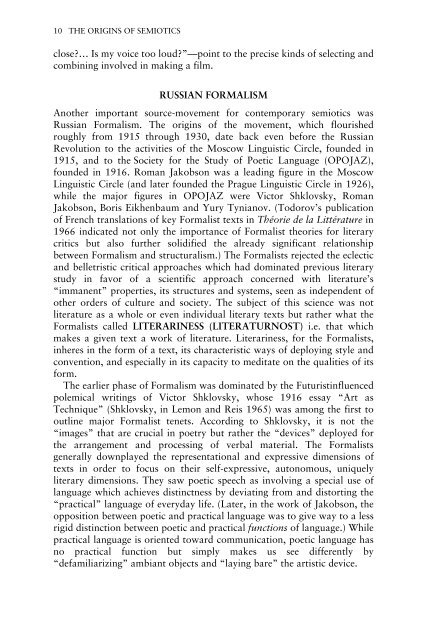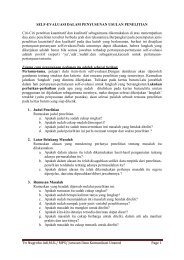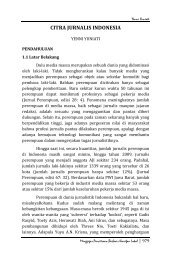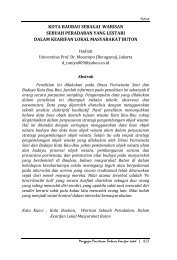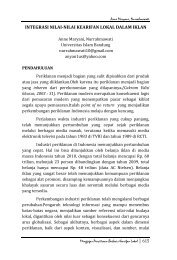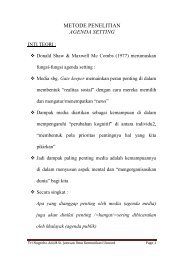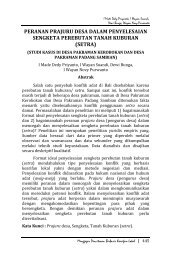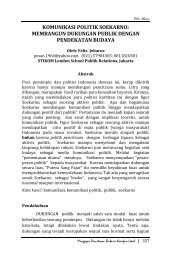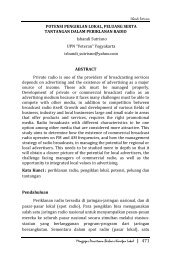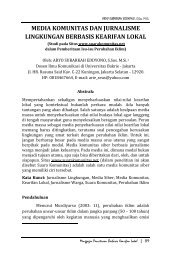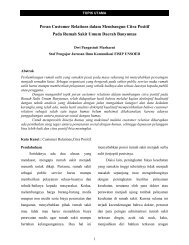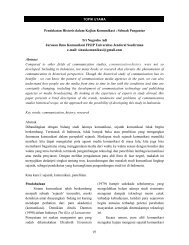New Vocabularies in Film Semiotics
New Vocabularies in Film Semiotics
New Vocabularies in Film Semiotics
Create successful ePaper yourself
Turn your PDF publications into a flip-book with our unique Google optimized e-Paper software.
10 THE ORIGINS OF SEMIOTICS<br />
close?… Is my voice too loud?”—po<strong>in</strong>t to the precise k<strong>in</strong>ds of select<strong>in</strong>g and<br />
comb<strong>in</strong><strong>in</strong>g <strong>in</strong>volved <strong>in</strong> mak<strong>in</strong>g a film.<br />
RUSSIAN FORMALISM<br />
Another important source-movement for contemporary semiotics was<br />
Russian Formalism. The orig<strong>in</strong>s of the movement, which flourished<br />
roughly from 1915 through 1930, date back even before the Russian<br />
Revolution to the activities of the Moscow L<strong>in</strong>guistic Circle, founded <strong>in</strong><br />
1915, and to the Society for the Study of Poetic Language (OPOJAZ),<br />
founded <strong>in</strong> 1916. Roman Jakobson was a lead<strong>in</strong>g figure <strong>in</strong> the Moscow<br />
L<strong>in</strong>guistic Circle (and later founded the Prague L<strong>in</strong>guistic Circle <strong>in</strong> 1926),<br />
while the major figures <strong>in</strong> OPOJAZ were Victor Shklovsky, Roman<br />
Jakobson, Boris Eikhenbaum and Yury Tynianov. (Todorov’s publication<br />
of French translations of key Formalist texts <strong>in</strong> Théorie de la Littérature <strong>in</strong><br />
1966 <strong>in</strong>dicated not only the importance of Formalist theories for literary<br />
critics but also further solidified the already significant relationship<br />
between Formalism and structuralism.) The Formalists rejected the eclectic<br />
and belletristic critical approaches which had dom<strong>in</strong>ated previous literary<br />
study <strong>in</strong> favor of a scientific approach concerned with literature’s<br />
“immanent” properties, its structures and systems, seen as <strong>in</strong>dependent of<br />
other orders of culture and society. The subject of this science was not<br />
literature as a whole or even <strong>in</strong>dividual literary texts but rather what the<br />
Formalists called LITERARINESS (LITERATURNOST) i.e. that which<br />
makes a given text a work of literature. Literar<strong>in</strong>ess, for the Formalists,<br />
<strong>in</strong>heres <strong>in</strong> the form of a text, its characteristic ways of deploy<strong>in</strong>g style and<br />
convention, and especially <strong>in</strong> its capacity to meditate on the qualities of its<br />
form.<br />
The earlier phase of Formalism was dom<strong>in</strong>ated by the Futurist<strong>in</strong>fluenced<br />
polemical writ<strong>in</strong>gs of Victor Shklovsky, whose 1916 essay “Art as<br />
Technique” (Shklovsky, <strong>in</strong> Lemon and Reis 1965) was among the first to<br />
outl<strong>in</strong>e major Formalist tenets. Accord<strong>in</strong>g to Shklovsky, it is not the<br />
“images” that are crucial <strong>in</strong> poetry but rather the “devices” deployed for<br />
the arrangement and process<strong>in</strong>g of verbal material. The Formalists<br />
generally downplayed the representational and expressive dimensions of<br />
texts <strong>in</strong> order to focus on their self-expressive, autonomous, uniquely<br />
literary dimensions. They saw poetic speech as <strong>in</strong>volv<strong>in</strong>g a special use of<br />
language which achieves dist<strong>in</strong>ctness by deviat<strong>in</strong>g from and distort<strong>in</strong>g the<br />
“practical” language of everyday life. (Later, <strong>in</strong> the work of Jakobson, the<br />
opposition between poetic and practical language was to give way to a less<br />
rigid dist<strong>in</strong>ction between poetic and practical functions of language.) While<br />
practical language is oriented toward communication, poetic language has<br />
no practical function but simply makes us see differently by<br />
“defamiliariz<strong>in</strong>g” ambiant objects and “lay<strong>in</strong>g bare” the artistic device.


